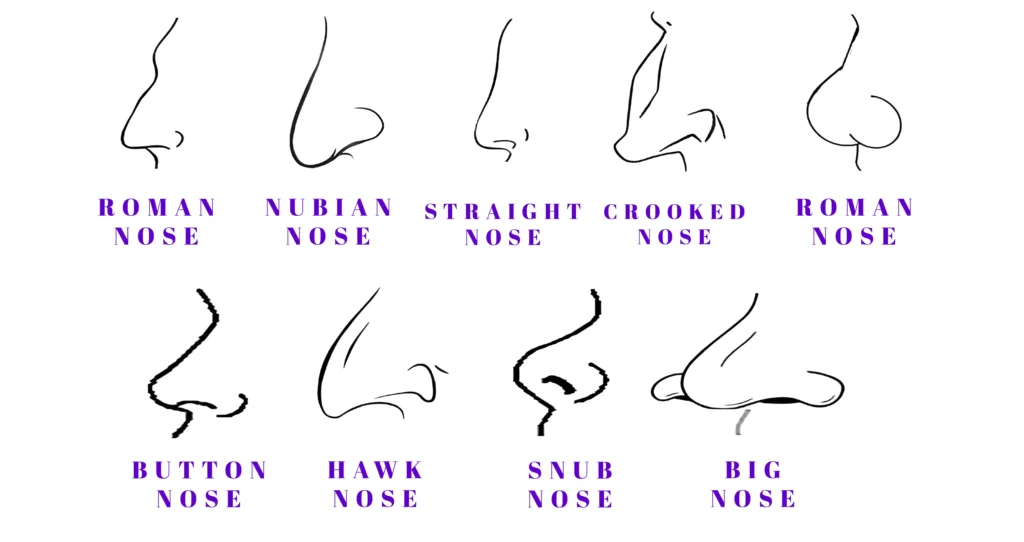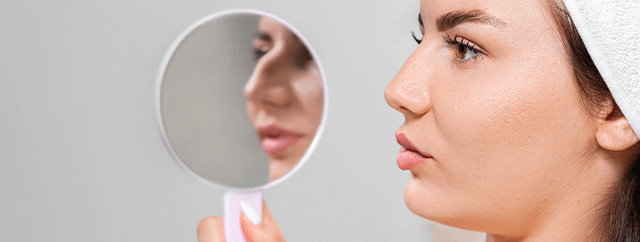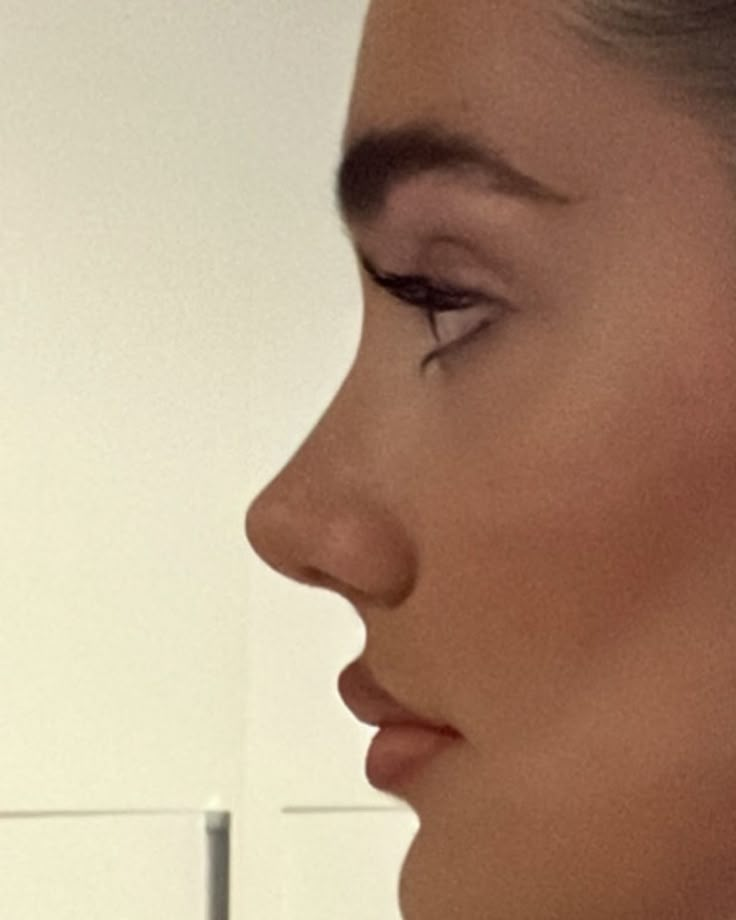Ever looked in the mirror and wondered what your nose might say about your health? While noses come in all shapes and sizes—hooked, button, Roman, or bulbous—modern science and traditional medicine suggest that the shape of your nose can offer subtle clues about your body’s internal systems.
Though it’s not a diagnostic tool, understanding the structure of your nose can raise your awareness of potential genetic, respiratory, and even cardiovascular traits. Let’s dive deep into this fascinating connection between facial structure and health—something that’s often overlooked but surprisingly revealing.

Table of Contents
Estimated Global Distribution of Nose Types
| Nose Type | Estimated Global Percentage | Notes |
|---|---|---|
| Roman Nose | 10–12% | Common in Mediterranean and some European populations |
| Button Nose | 13–15% | Popular among Western beauty standards; common in some Western regions |
| Greek Nose | 8–10% | Symmetrical and straight; commonly found in Southern Europe |
| Nubian Nose | 12–14% | Common among African and Afro-Caribbean populations |
| Hawk Nose | 4–6% | Less common globally; found in Middle Eastern and some Mediterranean regions |
| Bulbous Nose | 7–9% | Found across various ethnicities; often develops more with age |
| Fleshy Nose | 24–26% | Most common type worldwide; found across many ethnic backgrounds |
| Others / Mixed | 10–12% | Includes combo features, ethnic blends, and less defined categories |
Perks of Each Nose Type
| Nose Type | Visual Description | Perks |
|---|---|---|
| Roman Nose | Curved or hooked bridge | – Strong nasal structure – Good filtration of air – Distinct facial profile |
| Button Nose | Small, round, slightly upturned | – Efficient airflow – Often considered attractive – Less prone to injuries |
| Greek Nose | Straight bridge, symmetrical shape | – Excellent airflow – Low risk of congestion – Often linked to strong immunity |
| Nubian Nose | Wide base, long bridge, flared nostrils | – Great heat dissipation – Better air intake in humid climates – Expressive appearance |
| Hawk Nose | Long with downward curve | – Unique, strong facial character – May signify high mental resilience in traditional readings |
| Bulbous Nose | Rounded tip with thick skin | – High collagen levels – Robust skin barrier – Heals well from trauma |
| Fleshy Nose | Thick, wide, voluminous lower half | – Durable structure – Strong soft tissue support – Culturally linked to generosity in some regions |
7 Types of Nose shapes

1. The Roman Nose (Aquiline Nose)
Features: Slightly curved or hooked, with a prominent bridge.

Health Insights:
- Associated with strong bone structures.
- People with Roman noses may be more prone to sinus issues, as the curvature can slightly affect airflow.
- A strong nasal bridge is sometimes linked with increased nasal resistance, potentially influencing how well the air gets filtered before reaching the lungs.
Interesting Fact: Ancient face readers believed Roman noses indicated leadership and resilience.
2. Button Nose (Snub Nose)
Features: Small, round, and slightly upturned.

Health Insights:
- Generally considered “ideal” for breathing efficiency due to open nostrils.
- However, smaller nasal passages may lead to a higher risk of nasal congestion or snoring, especially in colder weather.
- It could be an inherited trait pointing to a shorter nasal septum, which may occasionally cause nasal valve collapse.
Health Tip: Keep your airways moist using saline sprays to avoid blockages.
3. Greek Nose (Straight Nose)
Features: Straight bridge with no curve or bump.

Health Insights:
- This symmetrical shape is often linked with good respiratory function.
- Efficient in air intake and may indicate fewer allergies or sinus problems.
- In some holistic traditions, it’s thought to reflect a balanced energy flow and a well-regulated immune system.
Bonus Insight: People with Greek noses may experience fewer issues with snoring or sleep apnea.
4. Nubian Nose
Features: Wide base, longer bridge, flared nostrils.
Health Insights:
- This shape may be more adapted for hot climates, helping with heat dissipation.
- The larger nostrils improve airflow, potentially reducing respiratory issues.
- Some studies link wider noses to a lower risk of sinus infections in humid conditions.
Did You Know? Nubian noses are associated with emotional expressiveness and high energy in some cultural assessments.
5. Hawk Nose
Features: Long and curved downward, resembling a bird’s beak.
Health Insights:
- It may affect nasal airflow, causing dryness or irritation.
- People with hawk noses could have deviated septum risks, increasing the chances of nasal blockage.
- Can be more prone to migraines linked to pressure imbalances in the sinus region.
Wellness Tip: Try steam inhalation to relieve sinus pressure and dryness.
6. Bulbous Nose
Features: Large, rounded nasal tip, often associated with thicker skin.
Health Insights:
- May suggest rosacea-prone skin, especially if redness and bumps are present.
- Sometimes linked to sebaceous gland enlargement, which may affect skin health more than respiratory function.
- In rare cases, a growing bulbous nose could signal rhinophyma, often tied to chronic skin inflammation.
Important: Persistent swelling should be checked by a dermatologist.
7. Fleshy Nose
Features: Thick and broad, with more volume in the lower half.
Health Insights:
- It may indicate higher levels of collagen and soft tissue—great for healing.
- Can be more prone to nasal polyps due to a thicker internal lining.
- Traditionally linked to a robust constitution, but may require monitoring for skin conditions like acne or sebaceous cysts.
Skin Tip: Regular exfoliation helps keep pores clear and skin healthy.
Extra Insight: Nose Shape & Oxygen Intake
A lesser-known fact: your nasal structure affects how much oxygen you absorb per breath. Shapes that restrict airflow can lead to mouth breathing, which is often associated with:
- Sleep apnea
- Fatigue
- Higher risk of oral health issues
If you’re constantly tired or snore a lot, your nose might be playing a bigger role than you think!
Conclusion: More Than Just Aesthetic
Your nose is more than a feature of beauty or heritage—it’s a biological gateway. While we shouldn’t jump to conclusions based on nose shape alone, it’s worth noting how these subtle anatomical differences might contribute to or reflect deeper health patterns. From skin health to breathing efficiency, the nose tells a surprisingly detailed story.
Frequently Asked Questions (FAQs)
Which nose shape is considered healthiest?
From a respiratory standpoint, straight or Greek noses are often considered efficient for airflow. However, each nose shape has its own strengths, and what’s “healthy” can depend on the individual’s overall anatomy and lifestyle.
Do people with bulbous noses have skin issues?
They might be more prone to conditions like rosacea or rhinophyma, especially if the skin is thick or oily. However, not everyone with a bulbous nose experiences skin problems.
Can nose shape affect sleep quality?
Absolutely. Nose shapes that limit airflow can contribute to snoring and sleep apnea, especially if nasal passages are blocked or too narrow. This can impact oxygen intake during sleep and lead to fatigue.
Does nose shape change over time?
Yes, your nose can subtly change as you age due to the loss of collagen, cartilage weakening, and skin changes. Conditions like rosacea or trauma can also alter its appearance over time.
Are certain nose shapes more common in specific climates?
Yes. Evolutionary biology suggests that narrower noses are more common in colder, drier climates, helping to warm and humidify air, while wider noses are more frequent in warm, humid areas for better heat dissipation.





